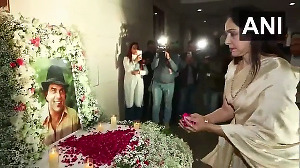For the last one week Sunil Punj, Hathway Cable & Datacom's deputy general manager (operations) in Delhi has been on his toes. The company has finally 'soft-launched' its digital cable delivery service in parts of Delhi and Punj has been busy selling the digital set top box to affluent cable & satellite homes in the city.
Life's been pretty hectic for Hinduja TMT's big boss Ashok Mansukhani in Mumbai as well. The company's executive vice president has been in the midst of planning a massive push for its 'digital delivery enhancement services.'
Simply put, it means that CAS (conditional access system) or rather voluntary CAS is here as these companies are now selling a digital set top box to access TV channels.
Of course, both Punj and Mansukhani are quick to reject the definition. "It is not CAS as it is not 'forced' buying of the digital receiver, nor is it mandatory," points out Punj.
Whatever the MSOs (multi-system operators) prefer to call it, the fact is that digital delivery of cable in India has been kicked off.
Hathway Cable, that controls nearly 50 per cent of Delhi's C&S homes, sold 112 boxes (eight of these were apparently purchased by a single houshold at Sainik farms) within the first two to three days of its launch.
And it continues to seed the market with live demos. Punj claims that the conversion rate is 70 per cent and the box costs approximately Rs 3,800.
While Hathway is offering 100 channels, a mix of pay and free-to-air, to begin with, Incable is readying to offer 150. "We are planning a huge push in Mumbai between Christmas and Holi. The target is to sell 25,000 boxes in the city during this period," says Mansukhani.
Also on the cards is a joint media and marketing campaign by Hathway and Incable to promote digital cable delivery. "We want to create a digital fever," says Mansukhani who is also the president of the MSO Alliance.
But why this sudden need to go digital? For starters, the MSOs had made huge investments (nearly Rs 400 crore (Rs billion)) in upgrading their cable network infrastructure and buying the set top boxes when the government announced mandatory CAS.
Later, as CAS was put on hold, the investments came to a nought. Though recently, the Telecom Regulatory Authority of India recommended that all new pay channels may go through the box, the order is not binding. Clearly, the MSOs saw no point in waiting for mandatory CAS.
Secondly, the analogue system could not take any more satellite channels. "The bandwidth is limited and new channels find it impossible to be seen," says Atul Gupta, vice president (distribution) at Jagran TV, the proposed news channel from the Dainik Jagran Group.
This has led to a demand and supply crisis where cable networks charge exorbitant carriage fee for delivering your channel into homes, says Gupta. "Digitalisation will bring in addressability as well as visibility," says Gupta.
To be sure, TV viewing through the digital box has several advantages. "The picture is crystal clear for all the channels being shown," assures Punj, adding that, the company is not charging extra for the service and 'the box is a one-time cost.'
The box also offers an electronic programming guide and a parental lock that needs a password to click-start a channel. Besides the MSOs are also promising the much-awaited pay per view and other value-add services.
There are some disadvantages too. The cost of the box for one. Secondly, in a multi TV household one needs a digital box for each unit. "If you don't do that, you will see the same channel that is being played through the box on all the screens," explains Punj.
The other disadvantage is that you still have to deal with the same cable operator.
But Punj says you will have 90 per cent less reason to complain. And as Jagran's Gupta puts it "digital is the only way to go."






